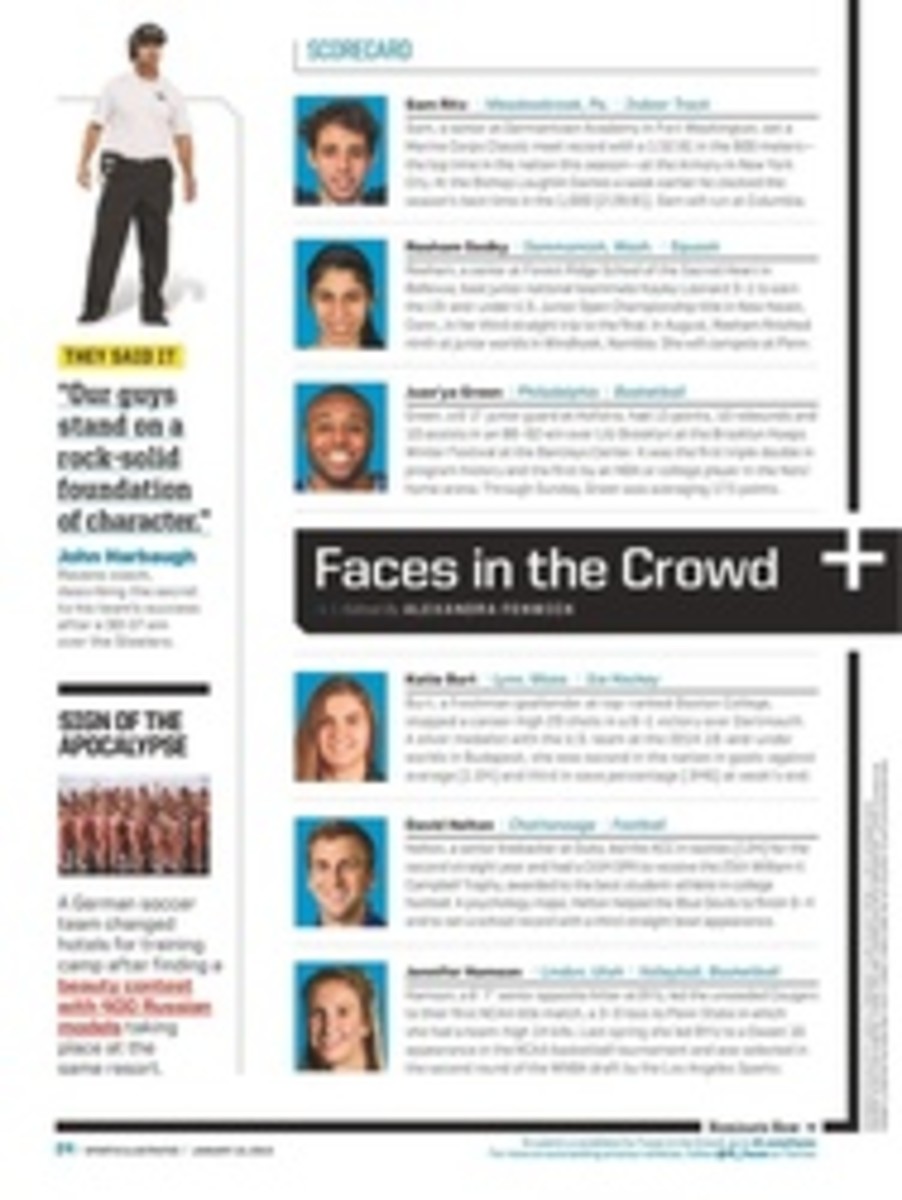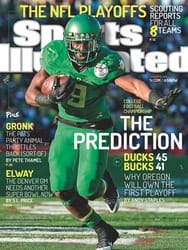
RAVENS
• PATRIOTS VS. RAVENS / SATURDAY 4:35 P.M. EST
TWO YEARS ago, the Ravens' Super Bowl run was propelled by the brilliance of quarterback Joe Flacco. This season, under new coordinator Gary Kubiak, the offense set a franchise record for points, with 25.6 per game. Still, Baltimore's playoff run hinges on its defense.
Fortunately for the Ravens, that defense boasts what might be the best front seven in football. Tackle Haloti Ngata is still an elite force. Brandon Williams, a third-round pick out of Missouri Southern in 2013, has been one of the best nose shades in the NFL over the past two months. Veterans Chris Canty and Terrell Suggs are formidable run defenders. Suggs is equally adept at attacking the passer, which he does opposite speed rusher Elvis Dumervil, who had 17 sacks this season. Rotating with Dumervil is the versatile Courtney Upshaw, a talented run stopper and pass defender in the flats; often joining Dumervil in sub packages is Pernell McPhee, an explosive inside rusher. At stack linebacker, 11th-year veteran Daryl Smith and rookie sensation C.J. Mosley can cover underneath, stop the run and blitz—all critical in coordinator Dean Pees's multifaceted hybrid scheme.
But for all of this front seven's merits, it was the secondary that carried Baltimore to a wild-card upset in Pittsburgh, constituting what may be the biggest surprise we'll see this postseason. Injuries and a lack of depth limited the effectiveness of the Ravens' defensive backfield all year. When cornerback Jimmy Smith, who was playing at an All-Pro--caliber level, went on IR with a Lisfranc injury to his left foot in early November, Lardarius Webb (who himself had battled a bad back for much of August and September) became the only viable corner.
Webb, fortunately, has stayed healthy and played well, operating primarily on the left side. Opposite him, Pees has employed a roulette wheel of starters, with the ball landing lately on Rashaan Melvin, an undrafted second-year pro. Like Jimmy Smith, Melvin has the size and length to win matchups on the perimeter. But having been plucked from the Dolphins' practice squad in November, he's not exactly brimming with experience.
More and more passing attacks these days are built around inside routes (including New England's). Because of the Ravens' injuries, their all-important slot-corner duties fell to inconsistent second-year safety Matt Elam toward the end of the season. But against Pittsburgh last Saturday those duties were handled mainly by Anthony Levine, and he held up admirably.
The top two seeds in the AFC, the Patriots and the Broncos, are both extremely difficult to play man coverage against largely because of their sophisticated crossing and switch release routes. In order to survive, Levine will have to be patient and lean on help from linebackers like Mosley and Daryl Smith in zone looks. He and his fellow corners will need support from safeties over the top, too, akin to what they got against the Steelers. The safety position has been every bit as precarious as corner for Baltimore, though the insertion of Will Hill—an athletic marvel with off-field problems to match—at the deep spot has brought some recent stability.
A makeshift secondary mixed with a sensational front seven? It's an unlikely formula for success, but so far it's working for the Ravens.
PHOTO
AL TIELEMANS/SPORTS ILLUSTRATED (SUGGS)
PHOTO
SIMON BRUTY/SPORTS ILLUSTRATED
BALTIMORE'S OFFENSE
In its upset win over the Steelers, the Ravens' offense operated exactly how offensive coordinator Gary Kubiak designed it to. Behind a banged-up (but still nimble) line, running back Justin Forsett worked effectively on zone stretches in the first half, totaling 41 yards on six carries. In the second half, QB Joe Flacco, out of those same stretch looks, sliced the Steelers' back seven on rollouts and bootlegs off play-action. Expect more moving-pocket plays from the Ravens for the rest of the postseason. The other three remaining AFC teams all feature man-based defenses. Moving the pocket is a great way to set up misdirection and crossing patterns, which both work well against man-to-man coverage.
2--6
Baltimore's record against teams that finished over .500.

